
Nadodrze: Wroclaw's Artistic Heartbeat
Discover Nadodrze in Wroclaw, Poland: a vibrant neighborhood where history meets modern artistry, offering a unique blend of galleries, street art, and culinary delights.
Nadodrze is one of Wroclaw's most vibrant and eclectic neighborhoods, a haven for artists, creatives, and those seeking a taste of local culture. Situated just north of the Old Town, Nadodrze has undergone a renaissance in recent years, transforming from a neglected area into a thriving hub of galleries, cafes, and street art. Wandering through the streets of Nadodrze, you'll encounter a captivating blend of historical architecture and modern creativity. The neighborhood's past is etched in its beautiful, though sometimes crumbling, tenement houses, many of which are now canvases for colorful murals. These artworks not only add a splash of color but also narrate the stories and spirit of the community. The heart of Nadodrze's allure lies in its artistic vibe. Art galleries such as Mieszkanie Gepperta and Studio BWA showcase local talent and cutting-edge contemporary art. For a more hands-on experience, visit one of the many workshops or pop-up events where you can try your hand at pottery, painting, or even traditional Polish crafts. Foodies will also find Nadodrze to be a delightful destination. The neighborhood boasts a variety of eateries, ranging from cozy cafes like Cafe Rozrusznik, where you can sip on artisanal coffee, to trendy bistros serving up innovative Polish cuisine. The local markets, such as the Nadodrze Market Hall, offer a chance to sample regional products and fresh produce. In Nadodrze, every corner tells a story. Whether you're a fan of art, history, food, or simply love exploring off-the-beaten-path destinations, Nadodrze promises a rich and memorable experience.
Local tips in Nadodrze
- Wear comfortable shoes; Nadodrze is best explored on foot.
- Visit on weekends to catch local markets and special events.
- Check out the street art map from local tourist info centers.
- Try the local bakeries for a taste of traditional Polish pastries.
- Bring a camera; the murals and historic buildings are photogenic.
Nadodrze: Wroclaw's Artistic Heartbeat
Nadodrze is one of Wroclaw's most vibrant and eclectic neighborhoods, a haven for artists, creatives, and those seeking a taste of local culture. Situated just north of the Old Town, Nadodrze has undergone a renaissance in recent years, transforming from a neglected area into a thriving hub of galleries, cafes, and street art. Wandering through the streets of Nadodrze, you'll encounter a captivating blend of historical architecture and modern creativity. The neighborhood's past is etched in its beautiful, though sometimes crumbling, tenement houses, many of which are now canvases for colorful murals. These artworks not only add a splash of color but also narrate the stories and spirit of the community. The heart of Nadodrze's allure lies in its artistic vibe. Art galleries such as Mieszkanie Gepperta and Studio BWA showcase local talent and cutting-edge contemporary art. For a more hands-on experience, visit one of the many workshops or pop-up events where you can try your hand at pottery, painting, or even traditional Polish crafts. Foodies will also find Nadodrze to be a delightful destination. The neighborhood boasts a variety of eateries, ranging from cozy cafes like Cafe Rozrusznik, where you can sip on artisanal coffee, to trendy bistros serving up innovative Polish cuisine. The local markets, such as the Nadodrze Market Hall, offer a chance to sample regional products and fresh produce. In Nadodrze, every corner tells a story. Whether you're a fan of art, history, food, or simply love exploring off-the-beaten-path destinations, Nadodrze promises a rich and memorable experience.
Iconic landmarks you can’t miss
Wrocław Market Square
Explore the vibrant Wrocław Market Square, a historical hub filled with stunning architecture, delightful dining, and captivating culture in the heart of Poland.
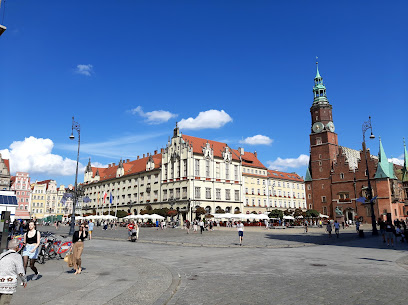
Bridge of Penitents
Discover the Bridge of Penitents in Wrocław, a stunning pedestrian bridge offering breathtaking views and a glimpse into the city's rich history.
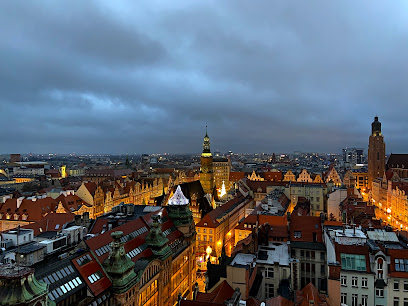
Museum of Bourgeois Art
Explore Wrocław's rich cultural heritage at the Museum of Bourgeois Art, where history and artistry converge in a stunning setting.
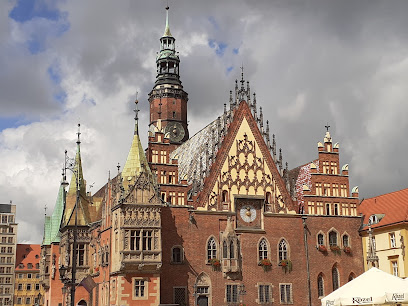
Colorful Backyards of Nadodrze
Explore the colorful backyards of Nadodrze in Wrocław, a vibrant artistic hub showcasing creativity and culture in every corner.
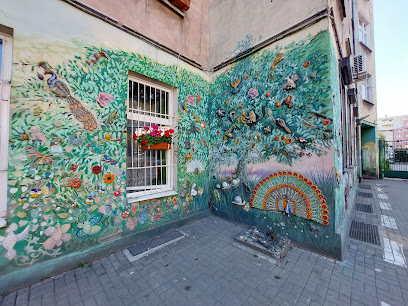
Bastion Ceglarski
Explore Bastion Ceglarski, a historical landmark in Wrocław that offers stunning views, lush surroundings, and a glimpse into the city's fortified past.
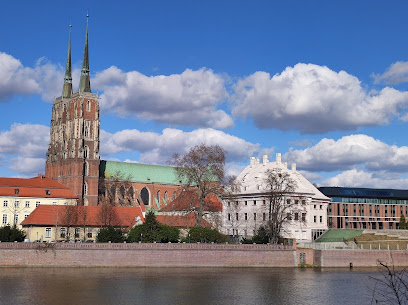
Slaughtered Animals Monument
Discover the Slaughtered Animals Monument in Wrocław, a moving tribute that intertwines art, history, and culture in a charming alleyway.
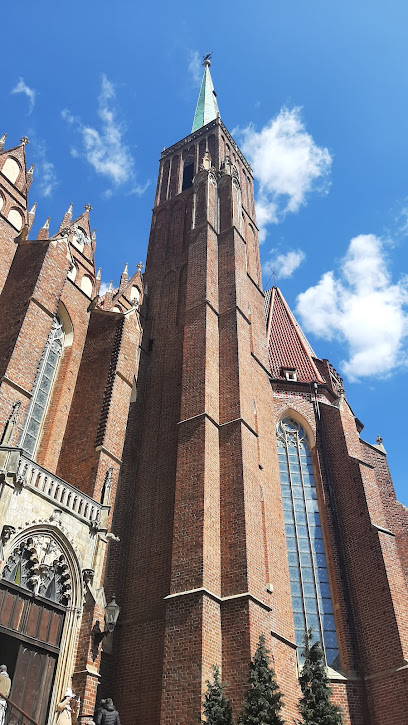
Brama kluskowa
Explore the enchanting Brama Kluskowa in Wrocław, where history and architecture meet in a captivating tourist attraction.
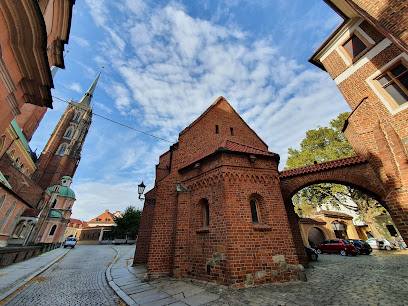
Statue of St. John Nepomunk
Explore the stunning Statue of St. John Nepomuk, a revered symbol of Wrocław’s rich history and artistic heritage, perfect for unforgettable memories.
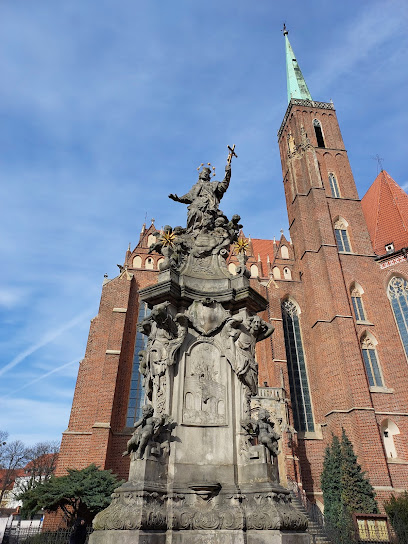
Archbishop's Palace in Wroclaw
Explore the stunning Archbishop's Palace in Wroclaw, an architectural marvel rich in history and surrounded by serene gardens.
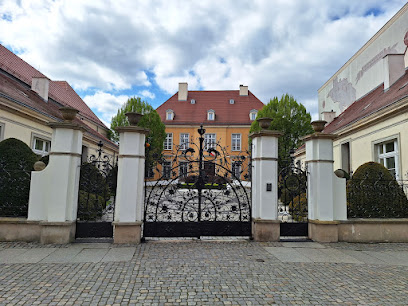
Wroclaw Historical Trail
Discover Wroclaw’s historical treasures on this captivating trail that showcases the city’s rich cultural heritage and stunning architecture.
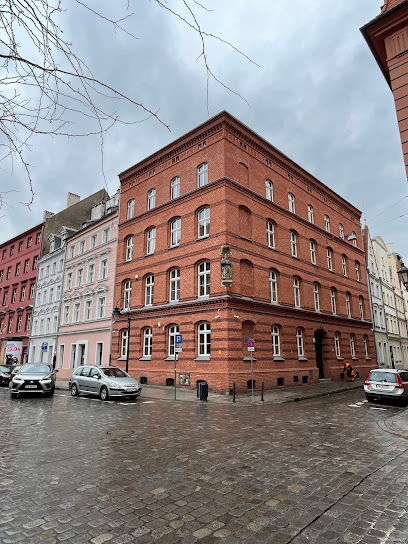
Heart of Nadodrz
Explore the Heart of Nadodrz, a vibrant cultural hub in Wrocław, brimming with art, history, and delectable cuisine for every traveler.
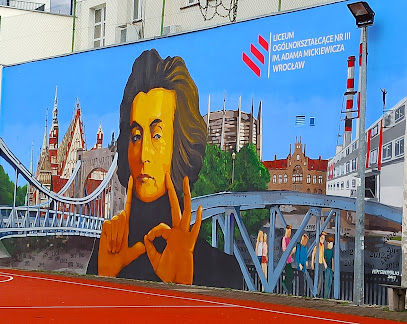
Nadodrze mural
Explore the Nadodrze mural in Wrocław, a breathtaking representation of local culture and artistry, perfect for photography and cultural exploration.
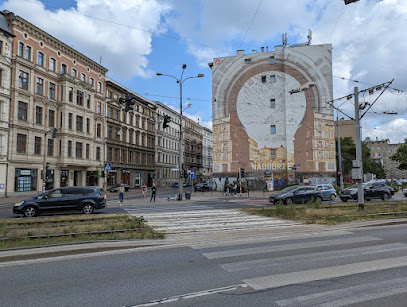
Unmissable attractions to see
Tumski Bridge
Discover Wrocław's Tumski Bridge, a romantic pedestrian bridge adorned with love locks, connecting history and beauty along the serene Oder River.
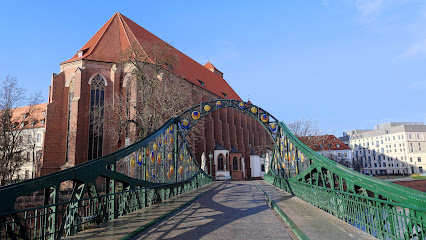
Botanical Garden of the University of Wrocław
Discover the lush landscapes and diverse plant life at the Botanical Garden of the University of Wrocław, a serene escape in the heart of the city.
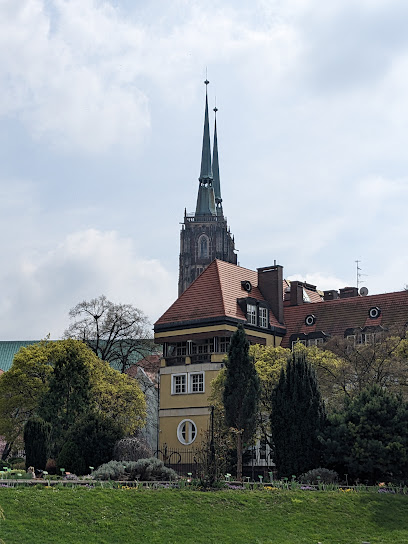
Museum of Bourgeois Art
Discover the artistic treasures of the past at the Museum of Bourgeois Art in Wrocław, a cultural gem showcasing history through art.
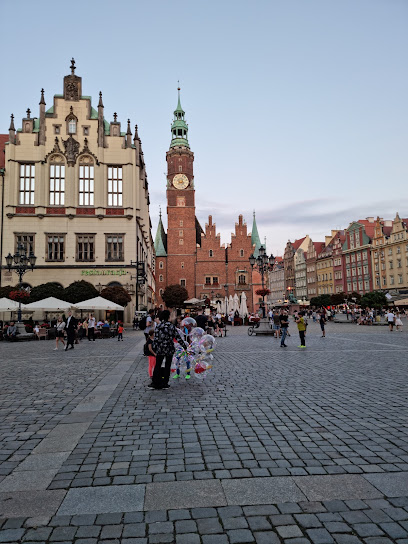
Slaughtered Animals Monument
Explore the Slaughtered Animals Monument in Wrocław, a poignant sculpture nestled in the charming alley of Jatki, reflecting the city's rich history.
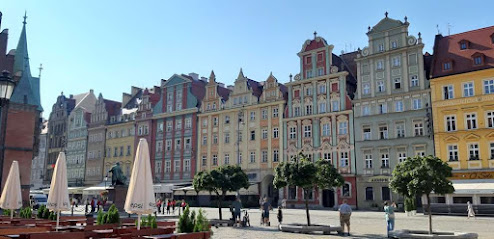
Heart of Nadodrz
Explore the Heart of Nadodrz in Wrocław, a vibrant cultural hub showcasing art, history, and community spirit in a unique setting.
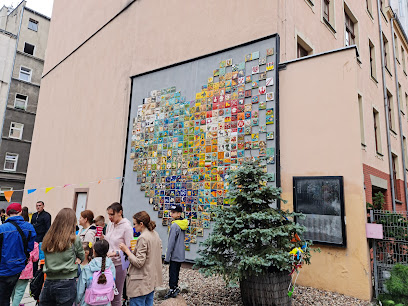
Nadodrze mural
Explore the Nadodrze Mural in Wrocław, a stunning testament to local artistry and culture in a vibrant neighborhood filled with creativity.
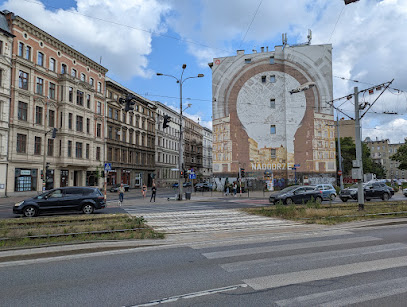
Plac Słowianski
Experience the beautiful ambiance of Plac Słowiański, a vibrant square in Wrocław, perfect for relaxation, exploration, and cultural events.
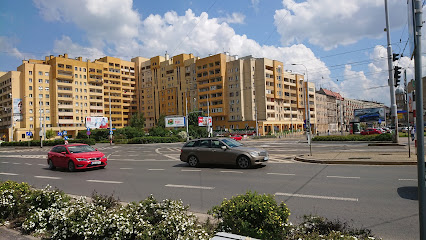
Essential places to dine
Ogień
Discover authentic Neapolitan pizza at Ogień in Wrocław – where every bite tells a delicious story.
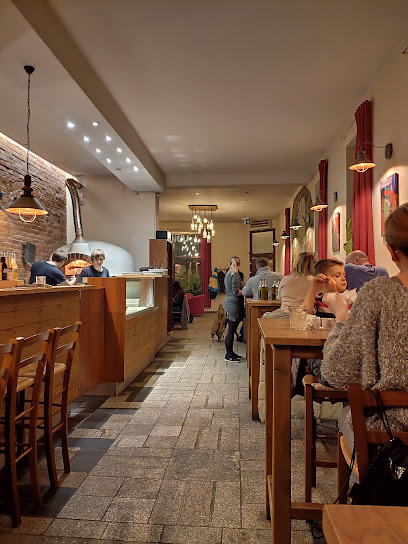
Mango Mama Nadodrze
Discover the vibrant flavors of India and Thailand at Mango Mama Nadodrze in Wrocław - A must-visit culinary destination for food enthusiasts.
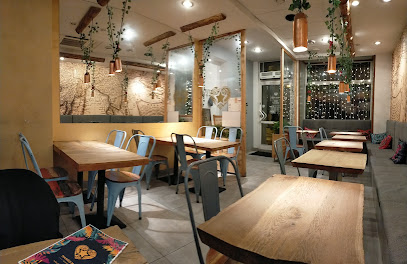
Bistro Narożnik
Experience the essence of Wrocław at Bistro Narożnik, where traditional flavors meet modern culinary artistry in a cozy atmosphere.
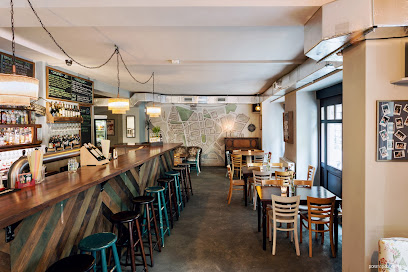
Tajfun
Discover the exquisite flavors of Asian cuisine at Tajfun in Wrocław – where tradition meets modernity in every bite.
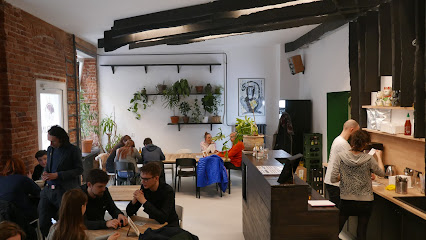
Pomiędzy cafe&bistro
Discover the culinary delights at Pomiędzy Cafe & Bistro in Wrocław – where comfort meets flavor in every bite!
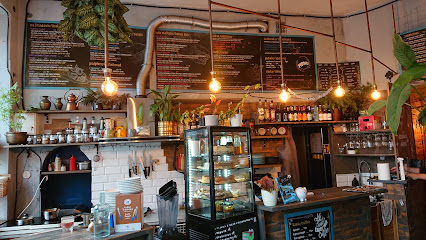
Mamine Smaki
Discover authentic Polish flavors at Mamine Smaki, Wrocław's beloved restaurant offering delicious meals in a cozy atmosphere.
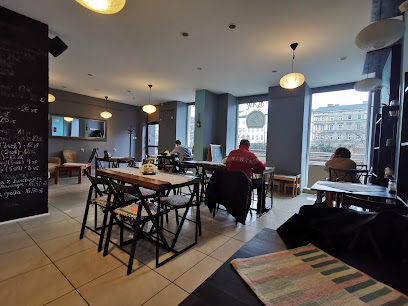
Bistro Nadodrze
Experience the best of fast food at Bistro Nadodrze in Wrocław – where tradition meets modern flavor!
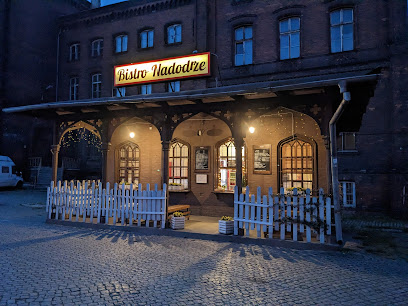
Powoli
Discover authentic Polish flavors at Powoli – where homemade dishes meet cozy ambiance in Wrocław.
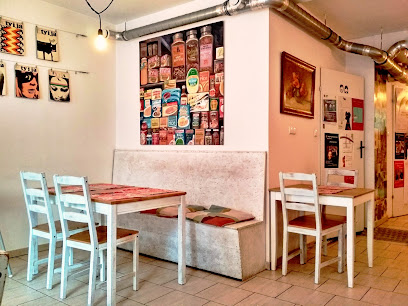
Bar Smak
Experience authentic Polish cuisine at Bar Smak in Wrocław – where flavor meets affordability in a cozy setting.
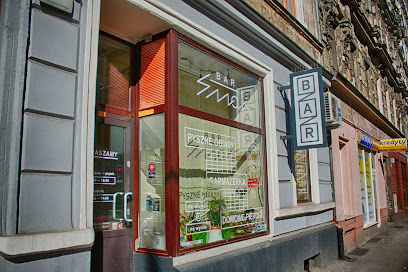
Monster Cook Nadodrze
Discover the rich flavors of Asia at Monster Cook Nadodrze - where Indian, Korean, and Thai cuisines unite in Wrocław.
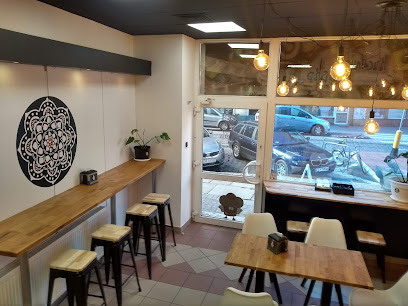
Markets, malls and hidden boutiques
Wrocław Fashion Outlet
Experience unbeatable savings and a diverse selection of brands at Wrocław Fashion Outlet, your ultimate shopping destination in Poland.
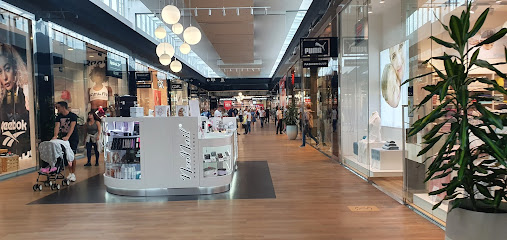
Bazar Miejski
Explore Bazar Miejski: A vibrant vintage clothing market offering unique finds, local brews, and a taste of Wrocław’s creative culture.
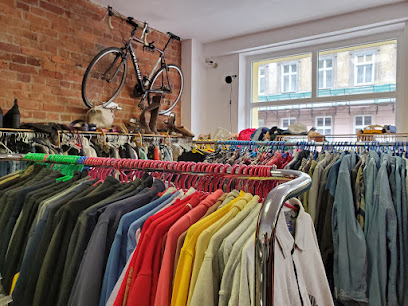
Mangowe Wrocław
Explore Mangowe Wrocław, a vibrant comic book store filled with collectibles and hobbyist treasures in the heart of Wrocław.
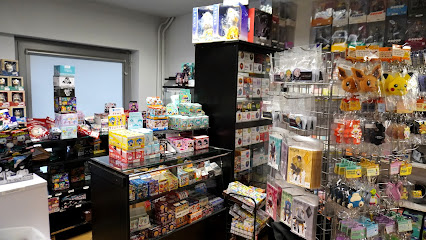
e-dziewiarka.pl we Wrocławiu
Explore e-dziewiarka.pl in Wrocław for the finest selection of yarns and knitting supplies, where creativity meets community in a cozy atmosphere.
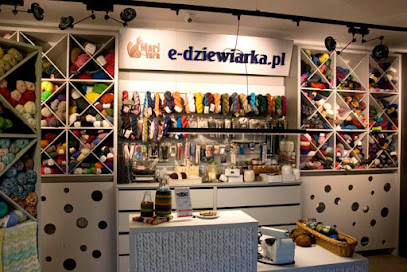
Margo Thrift Store
Explore Margo Thrift Store in Wrocław for a unique shopping experience filled with sustainable fashion and hidden treasures.
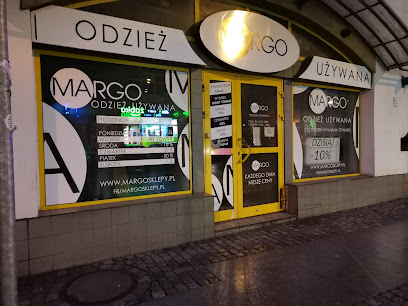
Folkstar
Explore Folkstar in Wrocław for handcrafted pottery and unique souvenirs that capture the spirit of Polish culture, perfect for every traveler.
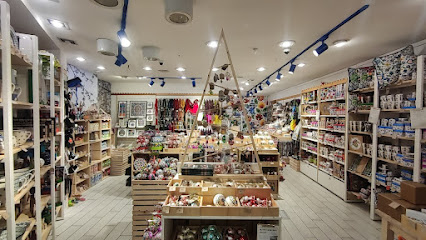
Natura Rzeczy
Explore the artistic treasures of Natura Rzeczy in Wrocław, a haven for handcrafted items and local creativity.
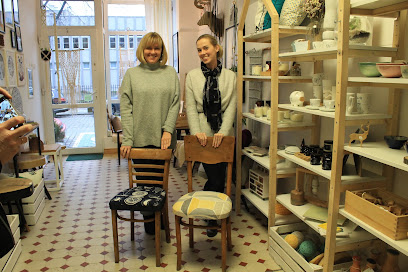
Cindy Vintage
Explore a curated selection of vintage clothing at Cindy Vintage, Wrocław's premier destination for unique fashion treasures.
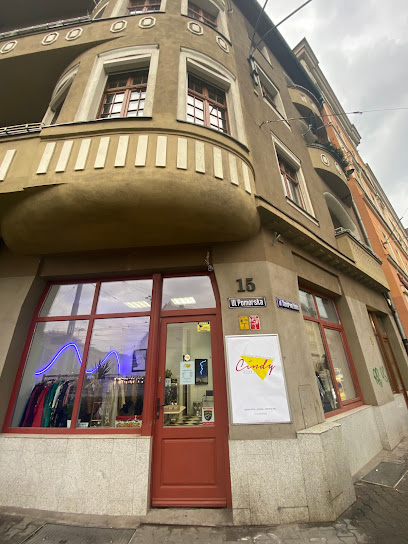
Brodatego 11
Explore Brodatego 11: A shopping mall in Wrocław blending vintage vibes, dog-friendly spaces, and local culinary delights.
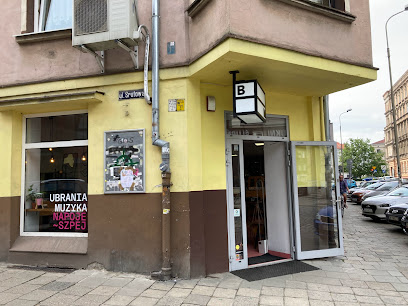
Stay With Me Clothes
Explore unique vintage treasures at Stay With Me Clothes in Wrocław, where fashion meets nostalgia in an inviting thrift store atmosphere.
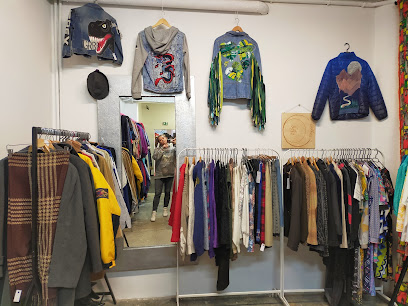
Essential bars & hidden hideouts
Bar Jak u Mamy
Experience authentic Polish comfort food at Bar Jak u Mamy, a cozy bar in Wrocław offering a taste of home and local flavors.
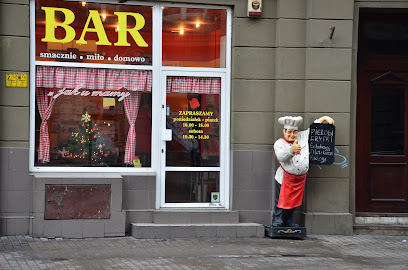
Bar Swojskie Jadło
Experience the authentic flavors of Polish cuisine at Bar Swojskie Jadło in Wrocław, a cozy bar that invites you to indulge in local delicacies.
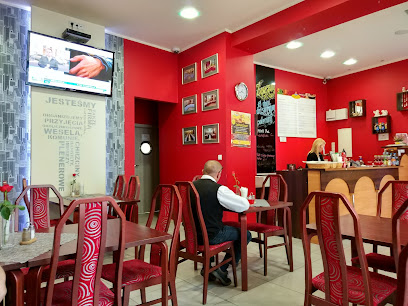
Rozlewnia Piwa i Wina
Experience the best of local and international brews at Rozlewnia Piwa i Wina, Wrocław's premier wine bar and gastropub offering exquisite flavors in a vibrant setting.
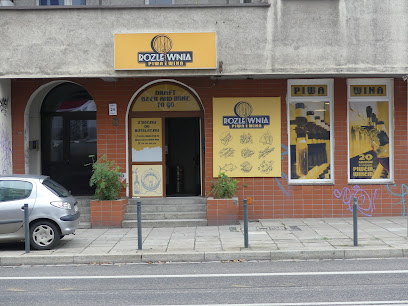
PUB BOTANIC
Discover the charming atmosphere and vibrant nightlife at Pub Botanic in Wrocław, a perfect blend of local brews and friendly vibes.
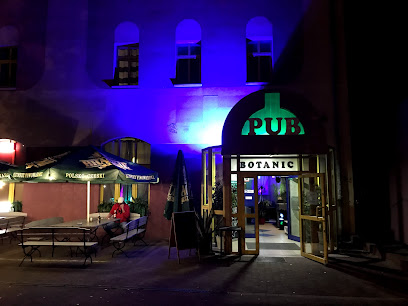
Pijalni Wine Bar
Discover the charm of Pijalni Wine Bar in Wrocław, where exquisite wines and a cozy atmosphere create unforgettable moments.
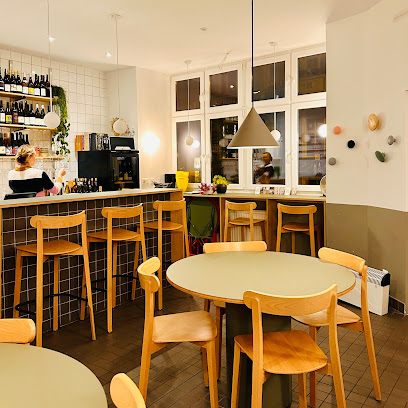
Ponton Pub & Bar
Discover the lively Ponton Pub & Bar in Wrocław, where scenic views and a vibrant atmosphere meet an extensive drink selection.
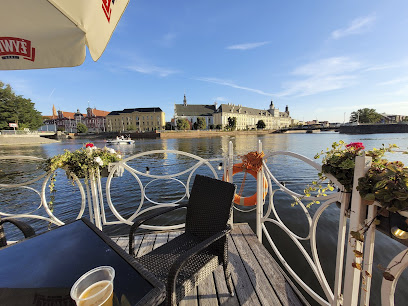
Wdech/Wydech Rooftop
Discover Wdech/Wydech Rooftop, where stunning views meet vibrant nightlife in the heart of Wrocław.
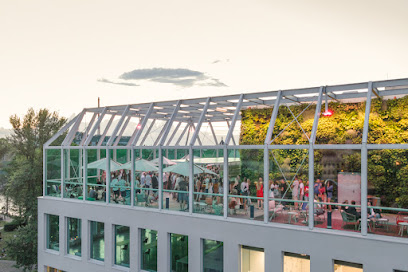
Rotter. PPH
Discover the vibrant world of Polish craft beer at Rotter. PPH, a brewpub in Wrocław offering an exceptional selection of locally brewed delights.
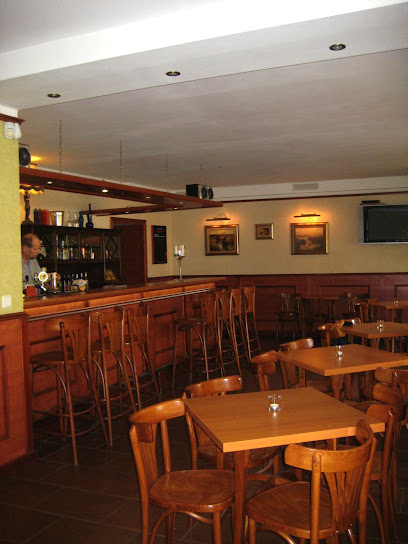
KoktajlBar
Explore the vibrant spirit of Wrocław at KoktajlBar, where unique cocktails meet an unforgettable entertainment experience.

Orbiś. Bar
Discover the vibrant nightlife of Wrocław at Orbiś. Bar, where creative cocktails and a cozy atmosphere await.
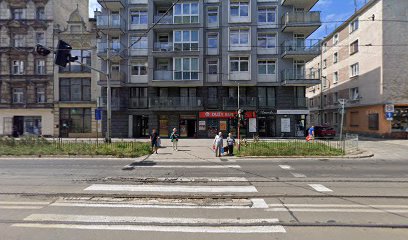
Local Phrases
-
- HelloCześć
[cheh-shch] - GoodbyeDo widzenia
[doh veed-zen-ya] - YesTak
[tahk] - NoNie
[nyeh] - Please/You're welcomeProszę
[proh-sheh] - Thank youDziękuję
[jen-koo-yeh] - Excuse me/SorryPrzepraszam
[pshay-prah-shahm] - How are you?Jak się masz?
[yahk sh-eh mahsh] - Fine. And you?Dobrze. A ty?
[doh-bzheh. ah tih] - Do you speak English?Czy mówisz po angielsku?
[chi moo-vish poh ahn-gyel-skoo] - I don't understandNie rozumiem
[nyeh roh-zoo-myem]
- HelloCześć
-
- I'd like to see the menu, pleaseChciałbym zobaczyć menu, proszę
[h-chyaw-bim zoh-bah-chich meh-noo, proh-sheh] - I don't eat meatNie jem mięsa
[nyeh yem myen-sah] - Cheers!Na zdrowie!
[nah zdroh-vee-eh] - I would like to pay, pleaseChciałbym zapłacić, proszę
[h-chyaw-bim zah-plah-cheech, proh-sheh]
- I'd like to see the menu, pleaseChciałbym zobaczyć menu, proszę
-
- Help!Pomocy!
[poh-moh-ts-ih] - Go away!Odejdź!
[oh-dey-jsh] - Call the Police!Zadzwoń po policję!
[zahd-foon poh poh-leet-syeh] - Call a doctor!Zadzwoń po lekarza!
[zahd-foon poh leh-kah-zah] - I'm lostZgubiłem się
[zgoo-bee-wem syeh] - I'm illJestem chory
[yeh-stem hoh-rih]
- Help!Pomocy!
-
- I'd like to buy...Chciałbym kupić...
[h-chyaw-bim koo-peech] - I'm just lookingTylko się rozglądam
[tih-ko sh-eh rohz-gwah-dahm] - How much is it?Ile to kosztuje?
[ee-leh toh kohs-too-yeh] - That's too expensiveTo za drogie
[toh zah droh-gyeh] - Can you lower the price?Czy możesz obniżyć cenę?
[chi moo-zhesh ohb-nee-zhoo-ych cheh-neh]
- I'd like to buy...Chciałbym kupić...
-
- What time is it?Która jest godzina?
[k-too-rah yest goh-dzee-nah] - It's one o'clockJest pierwsza
[yest pyeh-rv-shah] - Half past (10)Pół do jedenastej
[poow doh yeh-neh-ahs-tey] - MorningRano
[rah-no] - AfternoonPopołudnie
[poh-po-wood-nyeh] - EveningWieczór
[vyeh-choor] - YesterdayWczoraj
[v-cho-rye] - TodayDziś
[jeesh] - TomorrowJutro
[yoo-tro] - 1Jeden
[yeh-den] - 2Dwa
[dvah] - 3Trzy
[trzih] - 4Cztery
[ch-teh-rih] - 5Pięć
[pyehnch] - 6Sześć
[sh-ehsh-ch] - 7Siedem
[sh-eh-dehm] - 8Osiem
[oh-syem] - 9Dziewięć
[jehv-nyehch] - 10Dziesięć
[jeh-sh-ehch]
- What time is it?Która jest godzina?
-
- Where's a/the...?Gdzie jest...
[g-jeh yest] - What's the address?Jaki jest adres?
[yah-ki yest ah-drehss] - Can you show me (on the map)?Czy możesz mi pokazać (na mapie)?
[chi moo-zhesh mee poh-kah-zahtch (nah mah-pee-eh)] - When's the next (bus)?Kiedy jest kolejny (autobus)?
[kyeh-dih yest koh-leh-ny aut-oh-boos] - A ticket (to ....)Bilet (do ....)
[bee-let (doh)]
- Where's a/the...?Gdzie jest...
History of Nadodrze
-
Nadodrze, located just north of Wroclaw's Old Town, has roots that trace back to the 14th century, originally serving as a settlement for artisans and craftsmen. Its proximity to the Odra River facilitated trade and transport, making it an attractive location for burgeoning industries. Over the centuries, it grew as a diverse neighbourhood, reflecting the rich tapestry of Wroclaw's cultural and economic life.
-
The 19th century marked a significant transformation for Nadodrze, as the industrial revolution swept through Wroclaw. Factories and workshops proliferated, leading to an influx of workers from various regions and backgrounds. This period saw the construction of notable industrial buildings, many of which still stand today, showcasing the architectural styles of the time and the district's transition into an industrial hub.
-
Nadodrze has historically been a melting pot of cultures, particularly during the late 19th and early 20th centuries when Wroclaw was part of Germany. The neighbourhood was home to Polish, German, and Jewish communities, each contributing to its vibrant cultural life. This diversity is reflected in the varied architectural styles, local traditions, and community events that characterize Nadodrze.
-
The devastation of World War II had a profound impact on Nadodrze, as the neighbourhood suffered significant destruction. Following the war, Wroclaw underwent a major demographic shift, with the expulsion of German residents and the arrival of Polish settlers. This transition reshaped the cultural landscape of Nadodrze, leading to a re-establishment of community and identity in the post-war period.
-
In recent years, Nadodrze has experienced a renaissance as artists, architects, and urban planners have worked to revitalize the area. This transformation has been characterized by the adaptive reuse of dilapidated industrial buildings into creative spaces, galleries, and cafés, fostering a thriving arts scene. The neighbourhood now serves as a hub for contemporary culture, attracting both locals and tourists to its vibrant atmosphere.
Nadodrze Essentials
-
Nadodrze is easily accessible from various neighborhoods in Wroclaw. The area is well-connected by public transport, with trams and buses running frequently. From the city center, take tram line 1 or 2 directly to Nadodrze. Alternatively, you can catch bus line 149 or 111, which also serves this vibrant neighborhood. If you're arriving from Wroclaw's main train station, you can reach Nadodrze by a short tram ride on line 3 or 10.
-
Nadodrze is pedestrian-friendly, making it easy to explore on foot. Public transport options include trams and buses, which are reliable and cover the area comprehensively. For a more local experience, consider renting a bike through the city's bike-sharing program, which allows you to navigate the scenic pathways along the Odra River. Taxis and rideshare services are also available for those who prefer a quicker mode of transport.
-
Nadodrze is generally considered safe for tourists. However, like any urban area, it is wise to exercise caution, particularly at night. Avoid poorly lit streets and be mindful of your belongings in crowded areas. While most of the neighborhood is safe, areas closer to the train tracks can have higher incidents of petty crime, so it’s best to remain vigilant and aware of your surroundings.
-
In case of an emergency, dial 112 for police, fire, or medical assistance. The local hospital is located nearby, and pharmacies are scattered throughout Nadodrze for minor health concerns. Ensure you have travel insurance that covers any medical needs while abroad. For non-urgent medical advice, you can visit a local clinic.
-
Fashion: Do wear comfortable clothing suitable for walking, and be mindful of local customs by avoiding overly revealing outfits. Religion: Do respect local customs, particularly in areas near churches. Public Transport: Do give up your seat to the elderly and disabled. Don't eat or drink on public transport. Greetings: Do greet with a smile or a handshake, and don't forget to say 'Dzień dobry' (Good Day). Eating & Drinking: Do try local dishes at local eateries. Don't refuse an invitation to share food, as this is seen as polite.
-
To experience Nadodrze like a local, visit the local art galleries and street art installations that reflect the neighborhood's vibrant culture. Check out the unique cafes and bars that often host live music or art events. Engage with local artists and shop owners to learn more about the neighborhood's history and community. Additionally, take a stroll along the Odra River, especially at sunset, for a picturesque view of the city.
Trending Landmarks in Nadodrze
Nearby Cities to Nadodrze
-
Things To Do in Opole
-
Things To Do in Hradec Králové
-
Things To Do in Poznan
-
Things To Do in Gliwice
-
Things To Do in Czestochowa
-
Things To Do in Ostrava
-
Things To Do in Olomouc
-
Things To Do in Kutná Hora
-
Things To Do in Lodz
-
Things To Do in Bielsko-Biala
-
Things To Do in Brno
-
Things To Do in Prague
-
Things To Do in Dresden
-
Things To Do in Bydgoszcz
-
Things To Do in Torun












